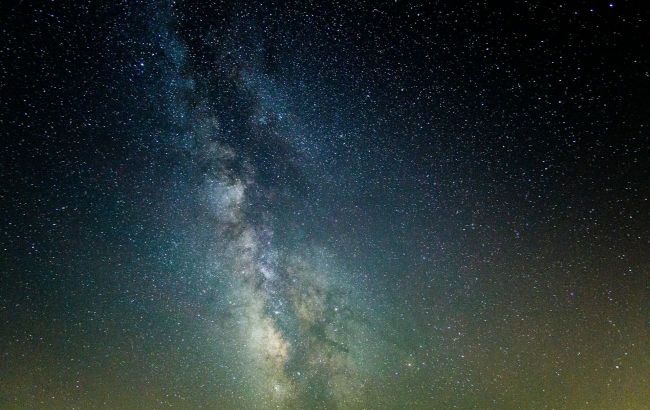Milky Way and Andromeda collision possibility: What astronomers say
 What the future holds for the Milky Way (photo: Unsplash)
What the future holds for the Milky Way (photo: Unsplash)
Astronomers have long considered it inevitable that our home galaxy, the Milky Way, will collide with the neighboring galaxy Andromeda within the next 5 billion years. However, a new simulation suggests that the likelihood of this collision in the next 10 billion may not happen, according to Space.com.
Located about 2.5 million light-years from our planet, the Andromeda galaxy, or Messier 31, is the closest large galaxy to the Milky Way.
Studying the movement of Andromeda by the characteristic features of the light it emits, astronomers in 1912 first predicted that this galaxy was on a collision course with our own Milky Way, approaching at a speed of 110 kilometers per second.
Later studies ensured that the two galaxies would collide head-on and find themselves bound in a cosmic dance, eventually merging into a single elliptical galaxy called Mlekomede.
Such mergers were a common sight between 6 and 10 billion years ago and shaped the galactic landscape of our universe. Although our galaxy shows remnants of past cannibalism, its fate is difficult to predict with certainty.
Measurements of the positions, motions, and masses of the two galaxies have strong limitations - and that's even with the latest and most accurate observational data, according to a new study led by astronomer Till Savala of the University of Helsinki in Finland.
In addition, previous work has not fully accounted for the gravitational influence of nearby, smaller galaxies, which distinctly and radically affect the orbit of the Milky Way and Andromeda and may be strong enough to push the two galaxies off their collision path.
These uncertainties leave room for radically different outcomes and a 50 percent chance of no collision between the two galaxies, the researchers write.
Using recent observations of nearby galaxies collected by the Gaia and Hubble space telescopes, the astronomers modeled possible scenarios for the evolution of the Local Group, which contains the Milky Way and Andromeda along with several other galaxies.
.png) Andromeda is approaching the Milky Way at a speed of 110 kilometers per second (screenshot)
Andromeda is approaching the Milky Way at a speed of 110 kilometers per second (screenshot)
When the Triangle Galaxy (M33), the next largest member of our galactic neighborhood, was included in the simulation, the probability of a merger increased.
However, when the orbit of the Large Magellanic Cloud, which runs perpendicular to the orbit connecting the two doomed galaxies, was included in the simulation, the merger became less likely over the next 10 billion years.
“If there is no merger, the two galaxies would pass at some distance from each other,” Manasvi Lingam, an astrobiologist at the Florida Institute of Technology.
Depending on how large this distance is, some of the outer regions of each galaxy could be disrupted and ejected into space. The new study still allows for a 50 percent chance of a collision, but according to Lingam, it is not an insignificant probability.
Even in a full collision, he said, the direct consequences for any single planetary system such as ours should be small.
Future data from the Gaia mission, which is producing the best maps of the Milky Way to date, will help provide more accurate estimates of the motion and mass of our galaxy. These data can help astronomers determine which of the neighboring galaxies has the dominant influence on a possible merger.
If the two galaxies eventually collide in billions of years, astronomers have predicted that our solar system will be ejected into one of the outer arms of the newly merged galaxy. Stars catapulted into space will leave behind impressive tails, while gas and dust compressed into clouds will cause outbreaks of star formation.
.png) This is how the night sky will look like from Earth after the merger of galaxies (screenshot)
This is how the night sky will look like from Earth after the merger of galaxies (screenshot)
.png) This is how the night sky will look like from Earth after the merger of galaxies (screenshot)
This is how the night sky will look like from Earth after the merger of galaxies (screenshot)
.png) This is how the night sky will look like from Earth after the merger of galaxies (screenshot)
This is how the night sky will look like from Earth after the merger of galaxies (screenshot)
.png) This is how the night sky will look like from Earth after the merger of galaxies (screenshot)
This is how the night sky will look like from Earth after the merger of galaxies (screenshot)
Two galaxies merge with a little chaos, mostly due to the large voids inside them. Our accelerating cosmos will pull distant galaxies further away from our neighborhood, so that about 10 billion years after the merger, Mlekomede will be our entire visible universe.
By that time, humanity will be long extinct, at least on Earth, because the expanding Sun will swallow our planet.
See also unique images of the Milky Way NASA showed.

